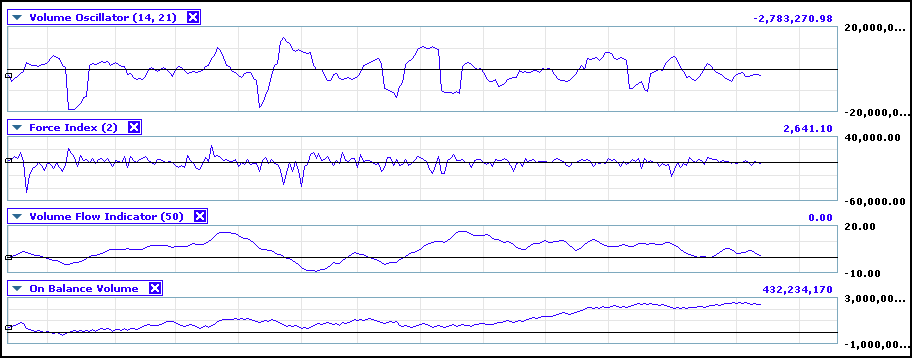A Look At Volume Based Indicators
Volume Indicators For Binary Options
Volume is a well known indicator of market direction. The number of people involved in a given movement, relative toe the number of people involved on an average basis, is an key metric defining the strength or lack of strength in the market. The trouble is that tracking changes in volume on your own on other than very basic level can be quite messy. Fortunately for us there are a number of volume based indicators that can be of service to us. These tools are great methods of finding trend following signals as well as potential areas of reversal.
On Balance Volume
On Balance Volume or OBV for short is an indicator developed in the 1960’s by Joseph Granville. He believed, and rightly so, that a change in underlying volume without a representative change in stock price, was an indication of future movement. His theories were incorporated together to form this indicator which compares the closing prices of two consecutive trading sessions. If the price on the second day is higher than that on the first that days volume is considered “up volume” and added to the previous day’s reading. If the second candles close is below the first day that volume is considered to be “down volume” and subtracted from the previous days reading. Over time the indicator will display convergences and divergences that are timely indications of potential market reversals.
The Volume Oscillator
The Volume Oscillator is a basic volume tool that uses two moving averages to create its plot. There is one fast and one slow moving average, usually 14 and 28 bars respectively. The fast moving average is then subtracted from the slow moving average to create the indicator. An increase in volume associated with an increase or decrease in prices shows strength in the underlying trend. Likewise, a decrease in volume can show an underlying weakness. In this way the indicator can confirm trends, predict breakouts and reversals and produce trend following signals. Because of the way in which this indicator is derived it can change direction very quickly, making the longer term analysis ie peaks and troughs, more valid.
The Force Index
The Force Index is a tool derived by Dr. Alexander Elder and described in his book “Trading For A Living”. This is a great book and a recommended read but that is another story. This indicator uses volume and price action to produce a reading of the strength, or “force”, of a movement. Dr. Elder believes that three things account for market movement; direction, extent and volume and this indicator takes all three into account.The formulation is very simple. The close of the current period is subtracted from the close of the prior period and then multiplied by the volume, thus if today’s close is higher the resulting number will positive and if today’s close is lower the reading will be negative. The bigger the move and the bigger the volume the more force behind the move. While not as good for determing direction from day to day, or bar to bar, it is a great tool for measuring trend strength through convergence/divergence and for identifying areas of potential reversal.
Volume Flow Indicator
The Volume Flow Indicator is considered by many to be an improvement on the OBV, which is already a decent indicator. The major differences are in how the data is derived and then how it is displayed. Unlike OBV which compares two closing prices and then simply adds or subtract volume the VFI uses a more complex calculation. First, the VFI uses “typical” prices, which is the average of the high, low and close. This is then applied to volume to produce a positive or negative reading with certain cut off limits that are intended to smooth out wild swings in volume. This is then smoothed again using a moving average, usually 50 bar, to produce a super smooth oscillator that travels above and below a central zero signal line. This indicator is easier to use than the OBV because it produces less whipsaws but also means you may have to wait a little longer for a signal to fire. Like with all oscillators this one is good for a number of different type of signals including divergence, convergence, support and resistance, trend strength and crossovers.
My Last Thoughts
These are all great tools and incredibly useful for traders. However, I think that VFI is the best and easiest to use. The formulation is more complex but with the smoothing creates an easier to read indicator and one that will produce far less false signals. If you look at my graphic above you can see that the first three indicators all produce a line that more or less follows the same path while the VFI produces a much different line that is more in tune with the underlying market trend. However, whichever you choose, I am sure it is easy to see just how well the addition of a volume based indicator can be to your strategy.
